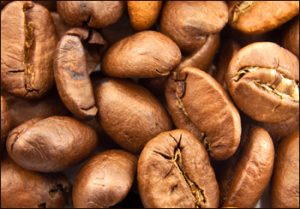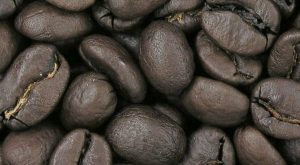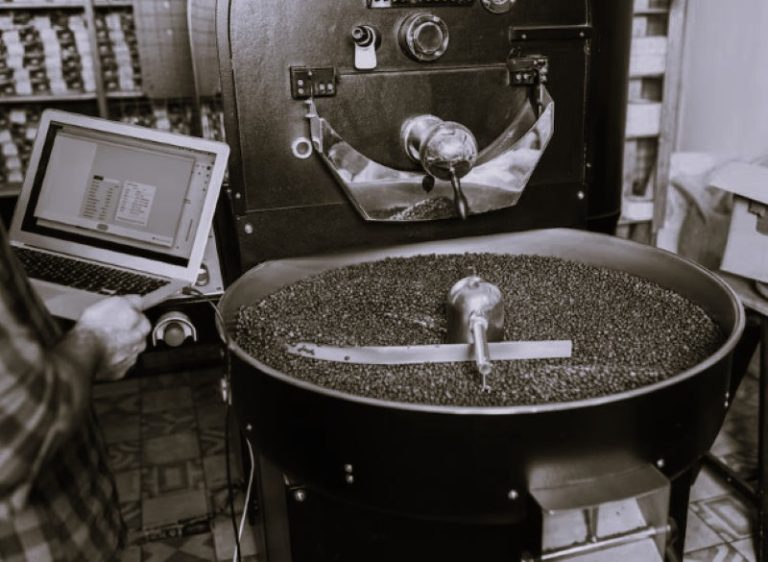Roasting Coffee
Let’s talk about the amazing process of roasting coffee beans, shall we? You see, coffee beans aren’t really coffee, as we know it until they are roasted. The make-up of the bean is the same, from its unique qualities to its caffeine content, but the flavor you taste in the cup isn’t available until it is roasted. The true art of the roaster is to find the perfect balance of roasting so as to bring out the bean’s truest flavor.
Home roasting coffee
The Pop!
Several different methods and “recipes” for roasting exist, but indubitably they all rely on certain combinations of heat and time. Many have compared the process to popping popcorn as the beans quite literally “pop” when they are heated to a certain temperature. Indeed, two pops! That’s water and oxygen escaping the bean in the first pop, carbon dioxide escaping in the second.
The Heat Is On
As the bean roasts in temperatures ranging from a balmy 370° degrees to a sultry 580° degrees it changes color from its natural green, through tans and medium browns; all the way to dark, chocolaty browns bordering on black. Too far and, well, you’re left with a carbonized lump of ash and that does not bode well for your precious cup of coffee.
The Roasters
There are two basic types of coffee roasters, though the sizes and capacities of these machines may vary greatly. The first and oldest type of roaster is the drum roaster. With this machine, coffee beans are loaded into a drum or cylinder-shaped chamber lain on its side. As the drum rotates, either gas or electricity – or even an open flame if you’re truly daring – heats the tumbling beans from below. The second type of roaster is the air roaster, which utilizes a rapid flow of super-heated air. Roast time is dependent on each roasters unique recipe.
The Finish
The roasted beans are then cooled either using a vacuum system or a water mist process known as quenching. Cooled beans are quickly packaged, sometimes in foil bags that allow them to “de-gas”. From here, maintaining freshness for our customers is critical: the roasted beans are swiftly and conveniently shipped directly to you for your enjoyment. An amazing fresh cup of your favorite brew, roasted to order with great care and love. Ah, I can taste it already!
The Art of Roasting
The art of roasting is in determining how much time and resulting color best suit the bean. There is a point; however, when the bean’s original flavor is overtaken by the flavor the roasting gives it. Hence, darker roasts, a quality preferred by some drinkers actually taste less like their original bean. Light and medium roasts find a balance to capture the bean’s qualities and flavor notes as determined by a bean’s geographical origin or variety. If you want to know, for example, how Kona coffee truly tastes, best not to roast it too much.
Roasting Stages:
Coffee Bean Roast Levels | Foodal.com
Cinnamon Roast
It’s the color, not the taste that earns this name. Also known as a New England or pale roast. Mildly flavored beans are usually roasted to this level to protect their delicate tastes.
Light Roast
Also known as the American roast, the beans are roasted to a light to medium brown color. This is used with many everyday coffees to produce a richer, even sweeter flavor that many prefer.
City Roast
Also considered a Medium roast, the finished bean has a medium brown color with a slightly oily texture. This is a widely used roast to retain the original flavor character of the bean.
Full City Roast
This roast produces a medium dark brown color with an oily texture to the finished bean. Sweetness and acidity wane, the brew becomes heartier in character, more chocolaty.
Vienna Roast
Considered the first of the dark roasts and sometimes lumped in with French Roasts, the bean finishes with a dark brown, shiny color and oily texture. Often used for espresso coffee, the original flavor character of the bean is now surpassed by the flavor of the roasting process.
French Roast
The heart of the dark roasts, the bean is very dark brown at finish. The brew has a smoky, burnt flavor, very low in acidity. This is perhaps the most popular roast for espresso makers.
Italian Roast
Almost black in color, and a brittle texture to the finished bean. Little character of the original bean remains, so this roast, as well as other dark roasts, can mask inferior, low quality beans.
Spanish Roast
Also known as Dark French or Neapolitan. These extremely dark beans are nearly black in color with a shiny oily appearance and boast a strong, charcoal flavor. Definitely an acquired taste.



















